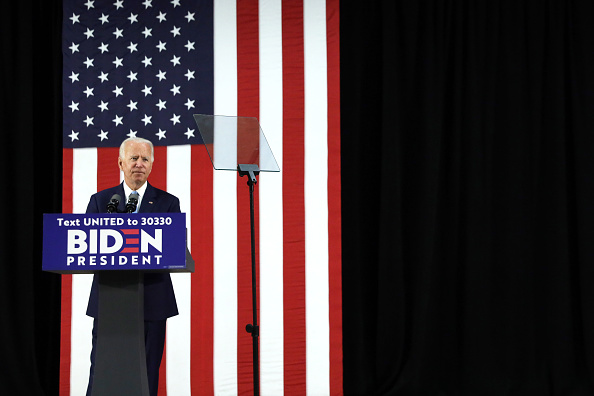THE COVID-19 EFFECT?
Without a doubt, one of the most influential factors influencing voter behavior is the administration’s handling of the coronavirus pandemic. According to the Pew Research Center, recent polling shows that President Trump’s approval rating — which closelycorrelates with likely Republican support in congressional races — has declined most sharply in the 500 counties where the rate ofconfirmed COVID-19 deaths exceeded 28 per 100,000 people.
Though an ominous portent for Republican fortunes in the coming election, several aspects of this picture give pause. A significantshare of voters who now disapprove of President Trump’s performance were confirmed supporters as recently as three months ago; according to one poll, roughly 17 percent of those who approved of President Trump in March now disapprove. A significant share ofthese live in areas particularly hard hit by the virus; areas with a high number of COVID-19 cases were 50 percent more likely to havereversed their opinion on Trump.
While much reporting has focused on the widening gap between Trump and Biden in battleground states, such as Arizona, Pennsylvania, and Wisconsin, support for the President has been slipping in states indispensable to his reelection. In Texas, Trump’snet approve-disapprove rating has slipped into negative territory at -2, while in Georgia and Florida, he has declined even further to a net -8.
DEMOCRATS ATTEMPT TO EXPAND THE ELECTORAL MAP
The combination of Trump’s poor polling in recent weeks and the tight alignment of support for him and congressional republicanshas given rise to new efforts Democratic activists to expanding the contest into traditional Republican strongholds, particularly in theSouth. According to Anita Dunn, a senior adviser to the Biden campaign, “We are a campaign aggressively looking to expand themap as we move forward.” Dunn specifically highlighted Texas and Georgia as “expansion targets,” noting that, “right now, we’re notruling anything out.”
This approach would build upon long-emerging trends in American political demography. As the highly regarded, and steadfastlynonpartisan, Cook political report recently noted, “Georgia and Texas are both states transitioning from red Republican to a morecompetitive shade of purple. These are driven by rising numbers of minority voters, but also by suburbs that are voting increasinglyDemocratic, particularly those with large shares of college-educated voters.”
Adam Kincaid, the executive director of the National Republican Redistricting Trust and a veteran GOP operative, downplayed thelikelihood of steep Democratic gains in traditionally Republican states. “If the Biden campaign is talking about winning in Texas andArizona and Georgia," he said, "they need to go back and read the clips from four years ago." Scott Walker, the former RepublicanGovernor of Wisconsin, a key battleground state, also noted that Democratic operatives “were making similar predictions in 2016 while Hillary Clinton ignored Wisconsin after our primary and tried to run up the score in other states.

TROUBLE FOR TRUMP’S REELECTION EFFORTS?
Trump takes some comfort in the fact was in a similar position leading up to his victory in 2016. Polls throughout his race against Clinton showed him suffering a deficit, often just as wide as some polls now suggest. However, the President succeeded in closing that gap in the final days of the campaign as late deciders broke decisively in his favour. But the mood of the electorate appears to have shifted substantially from where it stood in 2016.
As he did with Clinton, Trump has tried to disqualify Democratic rival Joe Biden, portraying the presumptive Democratic nominee asan incumbent while emphasizing his own outsider credentials. While Biden has not yet assembled an zealous support base comparable to Sanders or Trump, the President has thus far struggled to drive up Biden's unfavorable ratings to levels comparable to those reached by Senator Clinton in 2016. In a New York Times/SienaCollege poll , 50% of voters expressed not just an unfavorable opinion of Trump, but a very unfavorable view. And only 27% have avery unfavorable opinion of Biden.
Although the three reasons for President Trump’s current plight—the public’s negative evaluations of his character, his handling of theCOVID-19 pandemic, and his administration's response to the killing of George Floyd — are unlikely to change significantly in the few months leadingup to the election, William A. Galston, senior fellow at the Brookings Institute, noted that other factors could shift in the president’s favour. “The economy could recover more quickly than economists now project; the protestors could overplay their hand by resorting to violence and tearing down statues without authorization; Trump campaign operatives could come up with effective lines of attackagainst Joe Biden’s record and character; the president could belatedly articulate a rationale for his second term; and the presidentialdebates could convince wavering Americans who might have supported Biden that he is too old for the job,” he wrote.
To an extent, the President has already begun to shift his approach. Trump’s campaign has modified its messaging, promising a “great American comeback” after the worst economic downturn since the Great Depression and the highest unemployment records since the Bureau of Labor Statistics began keeping records. The Trump campaign has calculated that voters will respond in the president’s favour if he can fix what the pandemic broke.






